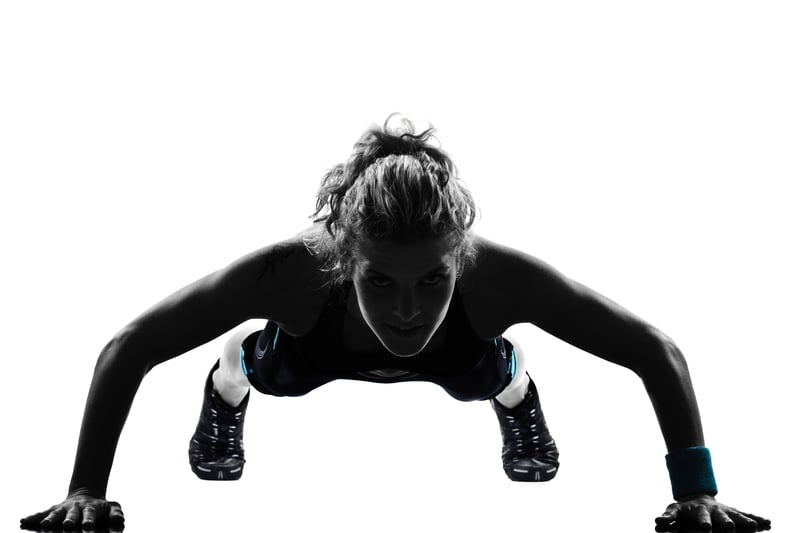Pros (and Cons) of Being a Hybrid Athlete

Do you have (or want) the physique of a bodybuilder, the strength of a powerlifter, and the cardiovascular fitness of an endurance athlete? You just might be one of the new breed of “hybrid athletes.” Here’s why you should (and shouldn’t) consider pursuing this goal.
What Is a Hybrid Athlete?
To better understand, it may be easier to first look at what a hybrid athlete is not, namely, a “traditional” athlete. A traditional athlete focuses all (or at least most of) their attention on one particular sport. Yes, they may need to train outside their sport for functional purposes, but their main objective is to be the best in one area. For example, a runner might mainly train for cardiovascular endurance, but they may also do a lot of flexibility and balance training.
A hybrid athlete will delve into many areas of fitness, such as weightlifting, powerlifting, running, yoga, swimming, flexibility, cycling, balance work, and maybe even Martial arts. Their focus is not just on strength or endurance. Rather, they aim to be a well-rounded and capable athlete in numerous areas.

What Are the Benefits of Being a Hybrid Athlete?
There are a lot of great things about being a hybrid athlete, such as:
Better injury prevention—since you’re not entirely focused on the same sport, you’ll have the ability to spread usage out among muscle groups. Using the runner again as an example, they could develop knee problems or shin splints from the constant and repetitive motion of running. A hybrid athlete, on the other hand, will likely do some running, but it won’t be the majority of their training. This variety allows their body to heal more quickly and doesn’t always stress the same areas.
Dedicate each workout to specific areas of fitness—in contrast to a Crossfit-type workout, a hybrid athlete will focus each workout on a different area. For example, one workout might be dedicated to powerlifting with some endurance training. The next workout would focus on high-intensity interval training (HIIT) and yoga. This approach can help athletes avoid burnout as well as overuse injuries.
Exceptional performance—these athletes are truly elite and excel at all things athletic. Since their physical and mental training encompasses so many areas of sports, they are able to develop superior skills and above-average performance across the board.
Better opportunities—because hybrid athletes are more versatile and skilled in more areas than most, they may have better opportunities when it comes to sports careers. They’re able to offer assistance in multiple ways and know many sports and the sport-specific training involved in each.
Adaptability—since they are so well trained with a multi-faceted approach, they are easily able to adapt to new physical and mental challenges, easily stepping into these roles and excelling.
Less boredom—for hybrid athletes, since every day is different, they can enjoy new challenges, learn new skills, and hone their athletic crafts. The holistic approach to overall health, both mental and physical, presents a daily set of demands that can keep the hybrid athlete motivated and engaged, helping prevent boredom and burnout. 
What Are Some of the Cons?
While being an amazing overall athlete might seem like a dream, it does come with its own set of challenges.
Jack of all trades, master of none—this might be one of the biggest challenges for the hybrid athlete. While they’re good at a lot of sports across the board, they’re probably not the best in any one area.
Tendency to overtrain—hybrid athletes are typically hard chargers, and the tendency to go all in all the time can be strong. While that’s great in terms of being a well-rounded athlete, it can be easy to cross over into overtraining and exhaustion. These warriors need to incorporate plenty of rest and make sure their nutrition and supplementation are on point.
Be prepared to do hard things—being a hybrid athlete isn’t for everyone. It takes time, commitment, dedication to more than one sport, and the urge to excel in literally every area of fitness. That means challenging yourself all the time in new and difficult ways. This type of extremism can be taxing both mentally and physically.
Time-consuming—if you’re already busy and fitting in workouts is tough, then hybrid fitness training may not work for you. The sheer time and energy involved in the sport is a lot, and you need to be able to adapt your lifestyle and schedule to a rigorous training regimen.
What Does a Sample Hybrid Workout Look Like?
If you’re interested in trying a hybrid type workout, you can use this as a template:
Sunday—Rest
Monday—Powerlifting and low-intensity cardio (e.g., cycling or incline walking)
Tuesday—Swimming followed by plyometrics
Wednesday—Skill-specific training like boxing coupled with balance training
Thursday—Weight training with compound movements followed by stretching and mobility exercises
Friday—Crossfit-type workout followed by endurance training
Saturday—HIIT and yoga
You can also change this to meet your style, preferences, specialties, and needs.
While being a hybrid athlete may not be for everyone, if it’s something you enjoy, then by all means, go for it! It’s such an adaptable and individualized program that if you have the desire and motivation, then you can make it work for you.





